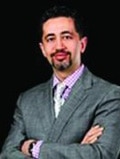
Naderi Center for Cosmetic Surgery & Skin Care, PLLC
5454 Wisconsin Avenue
1710
Chevy Chase, MD 20815

More Dental Health Articles
Comparing Ethnic To Caucasian Rhinoplasty
Is there a difference in technique between ethnic and non-ethnic rhinoplasty? Yes and no!
Looking at African American, Asian, Hispanic, Jewish and Middle Eastern noses, we notice some important anatomic differences compared to Northern European noses. These variations can involve the skin (thickness), cartilages (size, strength, and shape), bone (bridge height and width), nostrils (width or flare), as well as septum (cartilage size and abundance). Proper recognition of these nuances is crucial in planning the proper Rhinoplasty operation for each unique patient. Relationships between the nose, lips, chin, forehead and other facial structures must also be appreciated within each ethnic group. Finally, the desire to maintain ethnic features or not, is a personal preferences that must be thoroughly addressed with each patient during the consultation, using computer imaging.
For example, many Asian, Black, or Latino patients have thicker skin and weaker cartilages. This combination results in lack of tip support and definition. However, if properly recognized before surgery, great aesthetic results are easily achievable using structural cartilage grafts and suture techniques. Removing too much cartilage in such cases may result in further lack of definition, support, and an unhappy patient!
It is easy to mention clear differences across ethnic groups regarding nasal anatomy. However, variations also exist within each ethnic group. While many Asians have flat nasal bridges, requiring a build-up of this area for definition, some have high bridges or even nasal humps. While many African Americans have wide nasal tips and flared nostrils, some have very defined tips and narrow nostrils. While a nasal hump is associated with many Middle-eastern and Jewish noses, some have no humps but rather have large “meaty” tips. Therefore, “ethnic Rhinoplasty” is no different than “non-ethnic Rhinoplasty” since each nose is unique, and each Rhinoplasty surgery must be individualized, and each successful Rhinoplasty is initiated with the proper diagnosis and planning.
One of the most important skills any Rhinoplasty surgeon has is the skill of diagnosis. The problem at hand must first be diagnosed before the solution can be reached! No two noses are exactly the same regardless of ethnicity. While generalized ethnic characteristics must be respected, so must the uniqueness of each nose and face. Each nose and each patient needs an individualized plan. A planis impossible without initial diagnosis of the aesthetic issues needing correction. Rhinoplasty is an operation of “fractions of millimeters.” The Rhinoplasty surgeon must diagnose and recognize the nature and dynamics of the tissue (cartilage, bone, skin, scar, etc) with which he/she is working in order to be able to manage and predict these minute but significant changes. These changes must be envisioned not just a month post-operatively but for years to follow. Computer imaging is an absolute must for the diagnosis, dialogue and planning. A successful Rhinoplasty enhances the beauty of the eyes and the intrigue of the lips, regardless of ethnicity. All patients desire “better fitting” noses. All deserve beautiful yet natural noses.
Other Articles You May Find of Interest...
- Appliances Are In Now: How To Manage TMJ Disorder
- Why The Tooth Fairy Is Very Fun – and Important!
- Let’s Smile Dental’s 7&Up Club
- Strengthening Smiles: Understanding the Importance of Splinting Periodontally Involved Teeth
- Understanding Soft Tissue Grafting: A Key To Periodontal Health
- New Solutions for Dentures and Dental Implants
- Benefits Of Immediate Dental Implants

















